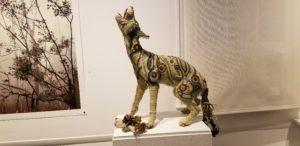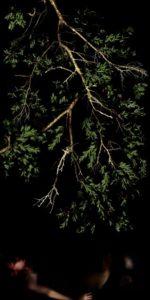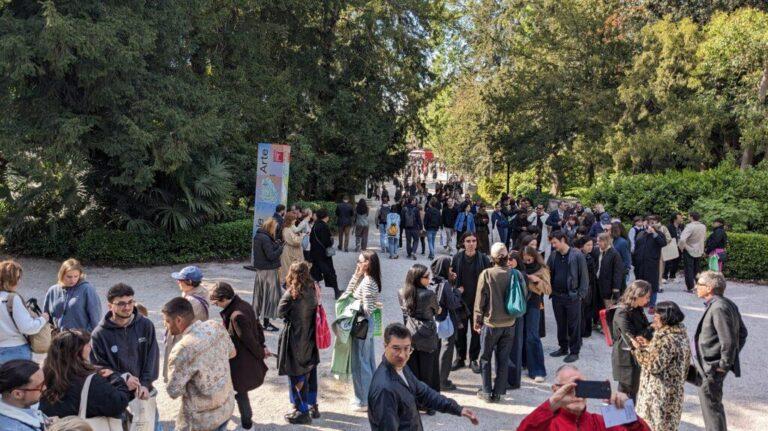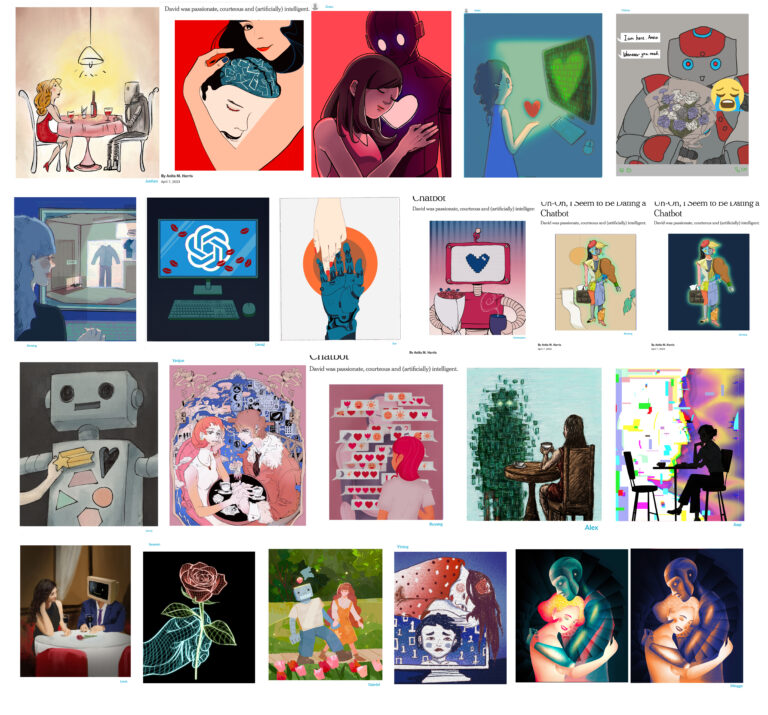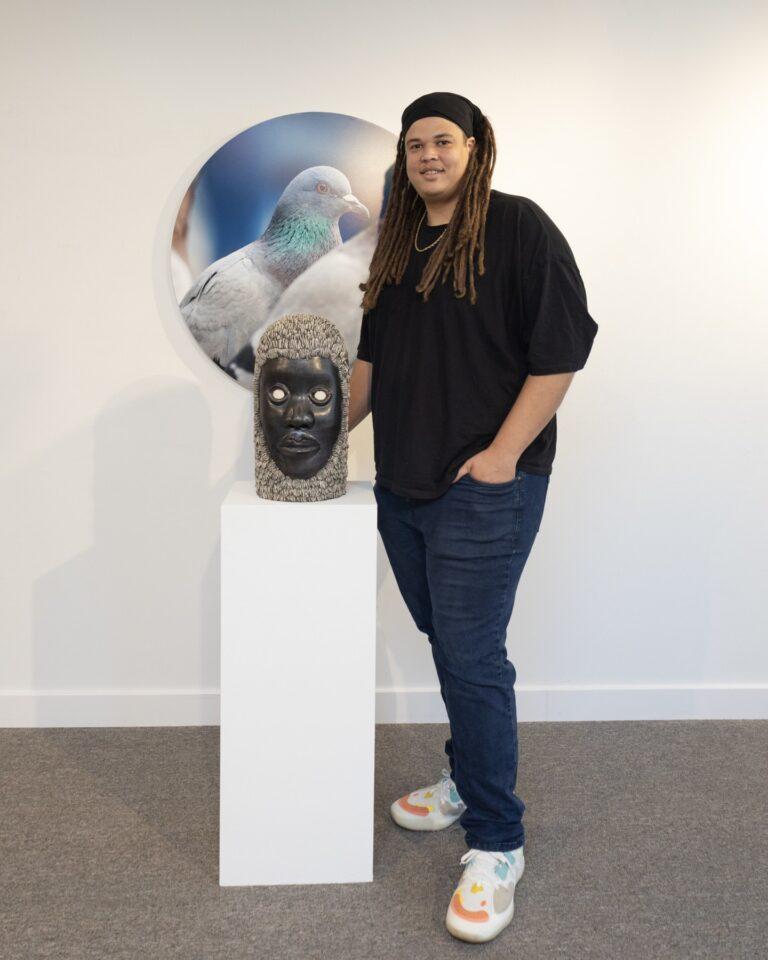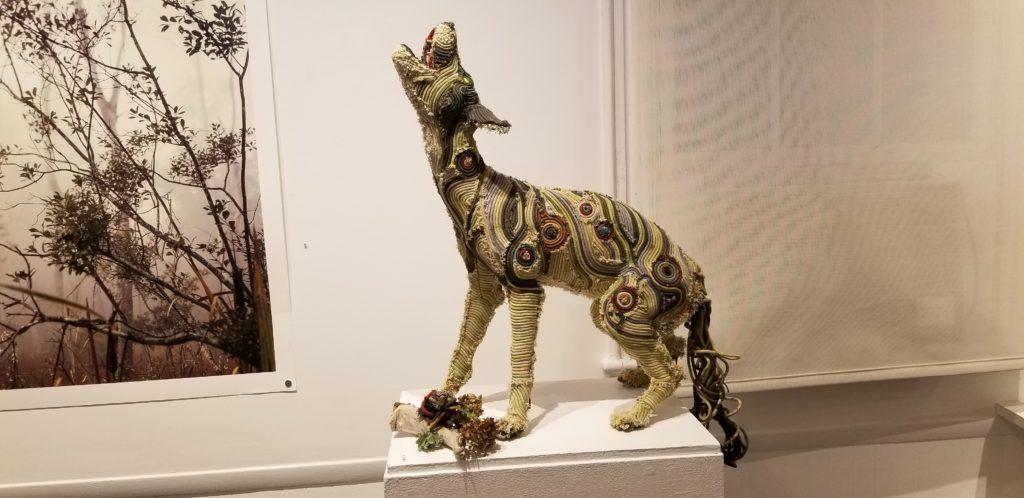
For anyone who loves animals, mythology, feminism, fishing and/or nature, the current exhibit at the Cambridge Art Association is a must-see. Curated by sculptor Gin Stone, the show, called “Creature Comforts,” features the work of Christine Kyle, Gail Samuelson, Gin Stone, & Daniel Zeese.
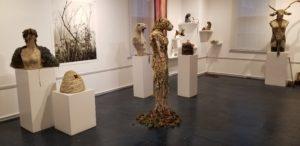 As described by a CAA press release, the show, at the Kathryn Schultz gallery, 21 Lowell Street, “invites the viewer to enter another environment: a landscape of contrasts, with creatures and beings spotlighted in their native realms. Some are adapted to wetlands, others to an environment unrecognizable to humans.”
As described by a CAA press release, the show, at the Kathryn Schultz gallery, 21 Lowell Street, “invites the viewer to enter another environment: a landscape of contrasts, with creatures and beings spotlighted in their native realms. Some are adapted to wetlands, others to an environment unrecognizable to humans.”
On entering the gallery, I was immediately “wowed” by the fantastical, life-sized large animal shapes formed of hard foam covered by various sorts of fishing gear –many of which their creator, Gin explained, represent mythical gods, showing both beauty and pain. The creatures–with seemingly real fur, teeth, tongues and such– are set in dioramas meant to mimic those of traditional natural history museums.
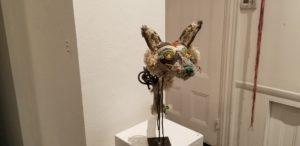 Gin says: “I am an ardent environmentalist and multimedia artist. I create humane taxidermy (anti-hunting trophies) with recycled material. I use hand dyed reclaimed longline fishing gear as a medium. The material itself is part of the work’s narrative. The local fishing culture is deeply ingrained in the environment I lives in, my studio is on Cape Cod.
Gin says: “I am an ardent environmentalist and multimedia artist. I create humane taxidermy (anti-hunting trophies) with recycled material. I use hand dyed reclaimed longline fishing gear as a medium. The material itself is part of the work’s narrative. The local fishing culture is deeply ingrained in the environment I lives in, my studio is on Cape Cod.
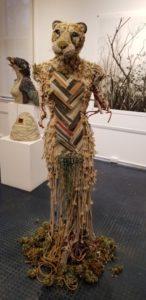
“Some of my more experimental work, as personified by the piece “Mother’s Milk – Spilled, “creates chimera and allegorical/mythological creatures. With these pieces, I incorporate a current social commentary by adding spent bullet casings, axes and other found objects to address issues such as toxic patriarchy, violence against women and children and hate crimes.”
Working in a Cape Cod studio, she writes, she is well aware of the traditional fishing community–and that “more recently the science community has come into the arena to help recover retain the health of oceans. There is frequently a clashing between these two groups. By bringing the recovery and recycling of the fishing gear to the artistic arena, I can help put a spotlight on collaboration and creativity, and perhaps a hopeful outlook on the future from everyone involved.”
Christine Kyle’s simple, organic ceramic forms stand in for “the messiness of life.” A geometric face or window slices through each piece, keeping its attention on the search for certainty. 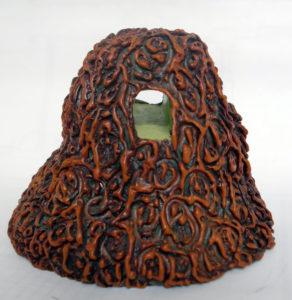
Their surfaces, made primarily of wax, damar resin and pigment, give each piece its own character. The statures of her creatures range within intimate dimensions. The wall portals are complementary pieces to the creatures. They add the challenge of dimensionality and the view through their portals is inward.
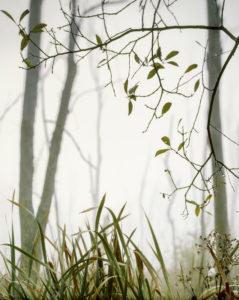 Gail Samuelson’s photos, shot with a large format film camera , display beauty of nature. As she writes, for example, “old leafless trees reaching towards the sky as new plants begin to grow in the rich decaying matter of upturned stumps. It is perfectly quiet except for the sound of cracking dead wood as I make my way further into the swamp. The predawn fog rises up from the ground, briefly casting its spell. Then in a moment, the sun peaks out over the trees, lighting each leaf and cobweb. Birds begin to sing.”
Gail Samuelson’s photos, shot with a large format film camera , display beauty of nature. As she writes, for example, “old leafless trees reaching towards the sky as new plants begin to grow in the rich decaying matter of upturned stumps. It is perfectly quiet except for the sound of cracking dead wood as I make my way further into the swamp. The predawn fog rises up from the ground, briefly casting its spell. Then in a moment, the sun peaks out over the trees, lighting each leaf and cobweb. Birds begin to sing.”
Daniel Zeese is an artist, designer and educator practicing in Somerville and Boston Massachusetts. His latest work explores populations, belonging, and identity within an urban environment. Inspired by a history of textiles and the domestic objects that we bring into our home to create refuge, Daniel reveals a way to let our minds return to nature while our bodies inhabit the city.
His work investigates what it means to be within civilization while on the edge of the wilderness. Outnumbered, on the fringe of what is accepted in the city, celebrated from a distance, and threatened to exile by the powers of the majority. Daniel reacts to the continuing history of violence within cities against people who, while defining the cultural identity of a place, are often misunderstood, attacked and objectified. Later we experience the outcome, the resulting martyrdom, through the master cultural narrative. This body of work explores, in many mediums, whom it is we choose to mourn and celebrate.
You can learn more about the artists at cambridgeart.org/creature-comforts and at an artists’ talk on Thursday, October 25, 6:30-8pm
On view at the Kathryn Schultz Gallery • 25 Lowell Street, Cambridge MA 02138
Hours: Tuesday-Saturday, 11am-5pm
–Anita M. Harris
Anita Harris is a writer, photographer and communications consultant based in Cambridge, MA.
New Cambridge Observer is a publication of the Harris Communications Group, also in Cambridge.
